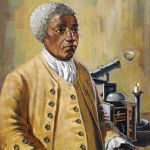Some of the very first people to arrive to the land that would be come Maryland in 1634 were of African descent. In Maryland, there are many cultural landscapes and historic sites that hold and interpret the varied history of African Americans from slavery and war to social traditions and science. Here is a look at several Maryland museums that contribute to telling African American history:
Reginald F. Lewis Museum
Baltimore City, Baltimore National Heritage Area
The Reginald F. Lewis Museum of African American History and Culture in Baltimore seeks to educate the public about the African American experience and contributions from the earliest days of Maryland to the present time. The Museum is so named for Reginald F. Lewis, a prominent Baltimore-raised lawyer, entrepreneur, and philanthropist, who expressed a desire to help establish such an institution just before his untimely death – and in 2002, the Reginald F. Lewis Foundation donated $5 million as an endowment for the Museum. The Lewis has a permanent collection of artifacts and archives, several new exhibitions each year, extensive resources for educators and students, and regularly hosts educational events. Partnering with the Maryland State Department of Education, they have also assisted with an initiative to include more African American history and culture in the public school curriculum.
MARYLAND HISTORY IN THE NEW SMITHSONIAN
An important piece of Maryland history is part of the collection of the Smithsonian’s new National Museum of African American History and Culture that recently opened on the National Mall in Washington, DC in September 2016. Presented in it’s entirety is the ca. 1874 frame home of former slave Richard Jones, founder of the free black community of Jonesville in Montgomery County. The Smithsonian worked with the Montgomery County Planning Department to deconstruct, move, and reconstruct the house to its original design inside of the Museum.
Prince George’s County African American Museum and Cultural Center
North Brentwood, Prince George’s County, Maryland Milestones State Heritage Area
The Prince George’s African American Museum and Cultural Center (PGAAMCC) aims to celebrate and inspire the community through the cultivation, preservation, and presentation of the cultural and artistic contributions of African Americans in Prince George’s County. The origin of the current Cultural Center is in the history of North Brentwood. In 1924, North Brentwood became the first municipality in Prince George’s County incorporated by African Americans. With strong community support in the early 1990s, a Friends group researched, created, and hosted an exhibit on their history, and later in 2000 organized into the current PGAAMCC. Brentwood, along with Hyattsville and Mt. Rainier, connected along Route 1 between Washington, DC and Baltimore, are part of a growing corridor of arts, culture, and heritage tourism as part of the Maryland Milestones heritage area.
Banneker-Douglass Museum
Annapolis, Anne Arundel County, Four Rivers Heritage Area
The Banneker-Douglass Museum in Annapolis is operated by the State of Maryland in fulfillment of the mandate of the Maryland Commission of African American History and Culture “to coordinate outreach efforts to communities, organizations, and local governments across Maryland serves as a unifying principle for all its departments.” The Museum, established in 1984, was named in honor of two African American Marylanders:

Banneker (1731-1806)
Benjamin Banneker was an author, scientist, mathematician, farmer, astronomer, publisher and urban planner credited with crafting the first wooden striking clock in American and helping survey the land that would become Washinton, DC. Banneker was born free in Baltimore County, Maryland; the Benjamin Banneker Historical Park & Museum currently operates on that site and offers historical, cultural and natural events and tours throughout the year.

Douglass (1818-1895)
Frederick Douglass was born a slave in Talbot County, Maryland and escaped from slavery in 1838. He was a skilled orator, writer, and advocate – all for the anti-slavery movement and later for the woman’s suffrage campaign, too. Douglass’ home in Washington, DC is now the Frederick Douglass National Historic Site, and their is the Frederick Douglass Museum and Cultural Center in community established by his son, Highland Beach, Maryland.
Additional Resources
- Maryland Commission on African American History and Culture
- Calendar of Maryland’s African American History
- Brief Overview of Baltimore’s African American History
- Discover Maryland’s African-American History
- African American Heritage Preservation Program Grants for Capital Projects
This post was researched and written by Kyle Fisher, one of Preservation Maryland’s Waxter Interns. Kyle’s work with us focuses on research and communications. He has a BA in Communications and History from Virginia Tech and an MA in Social Studies Education from Loyola University Maryland. Learn more about Kyle and our intern program here: presmd.org/waxter.
